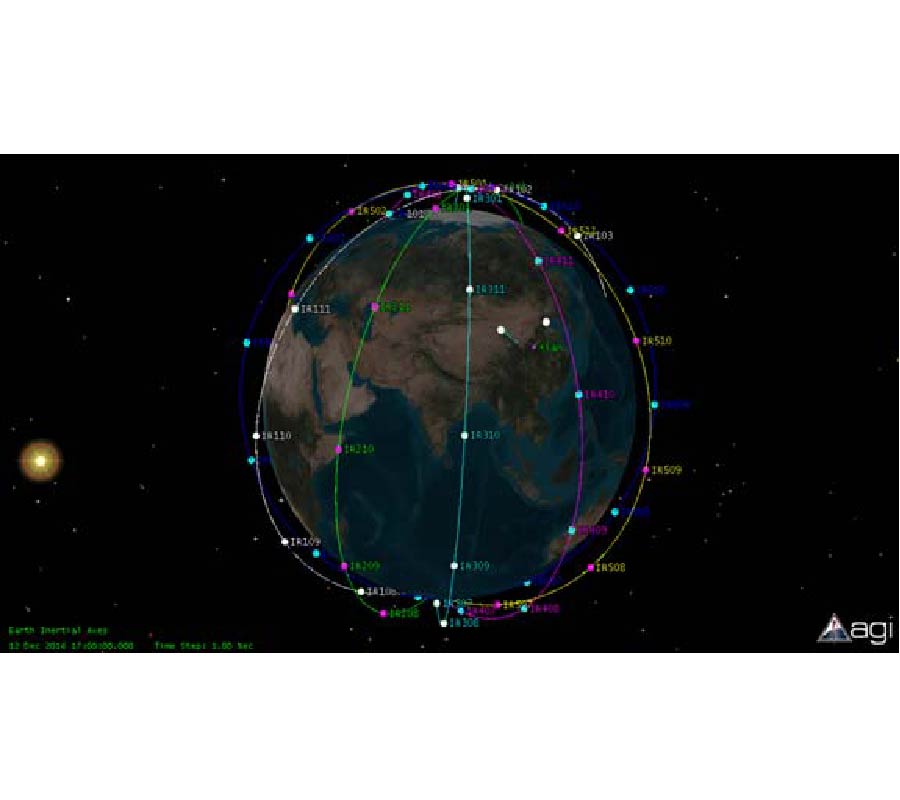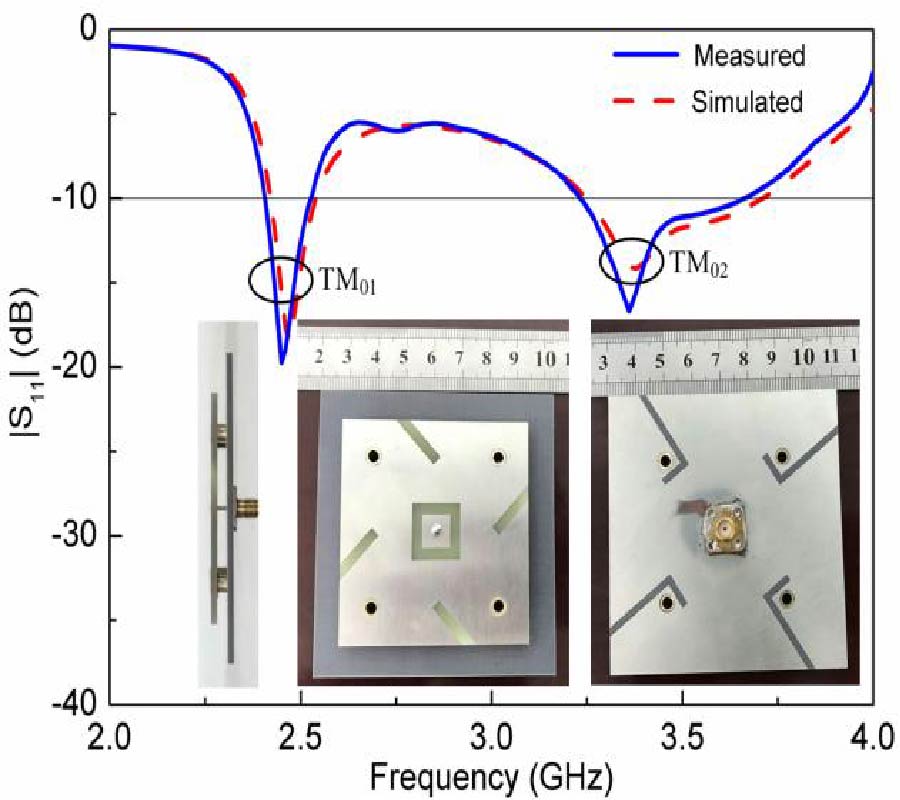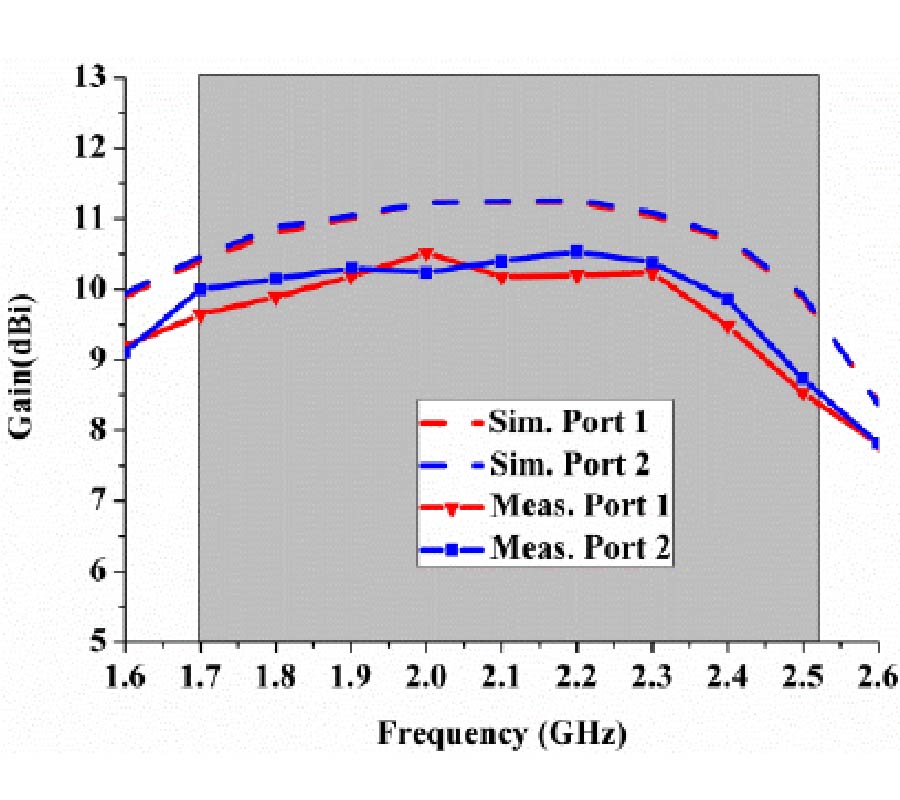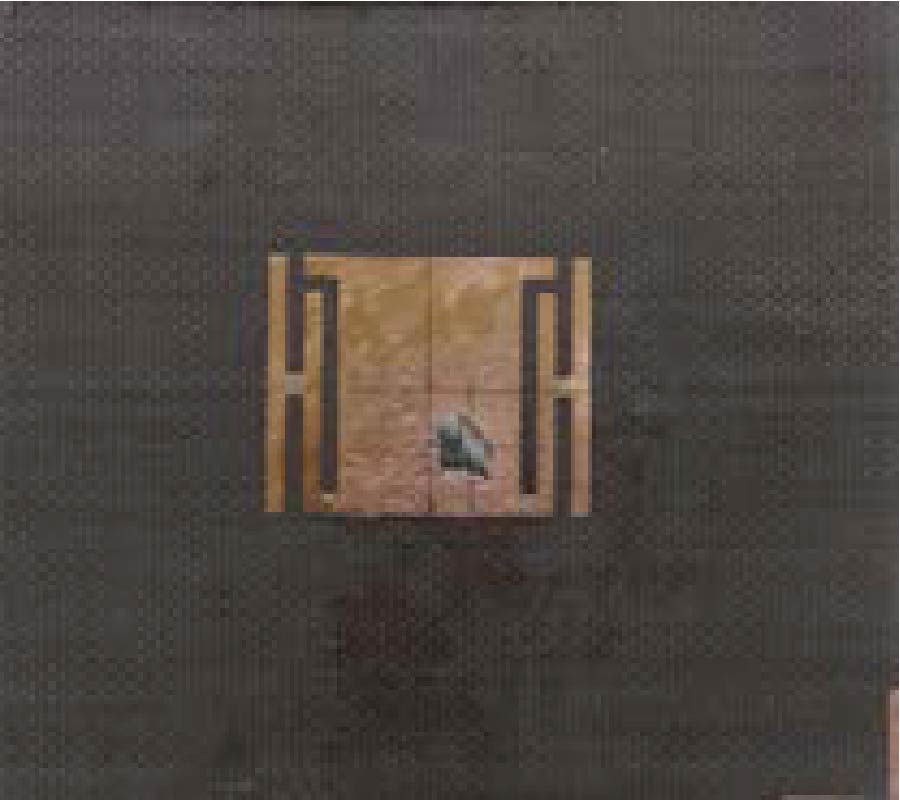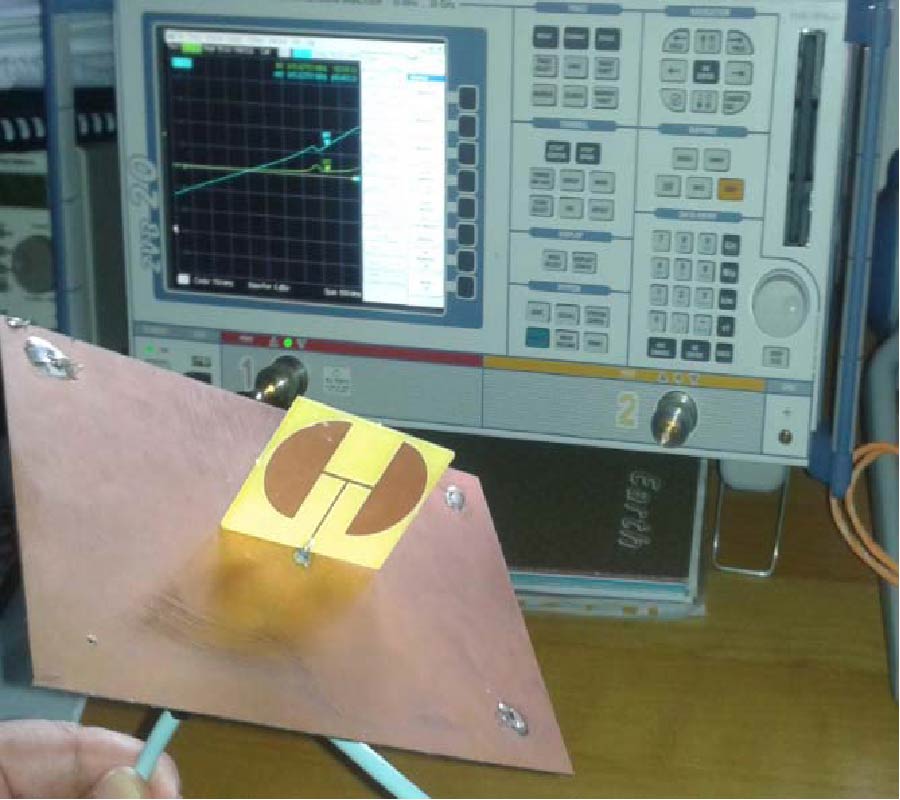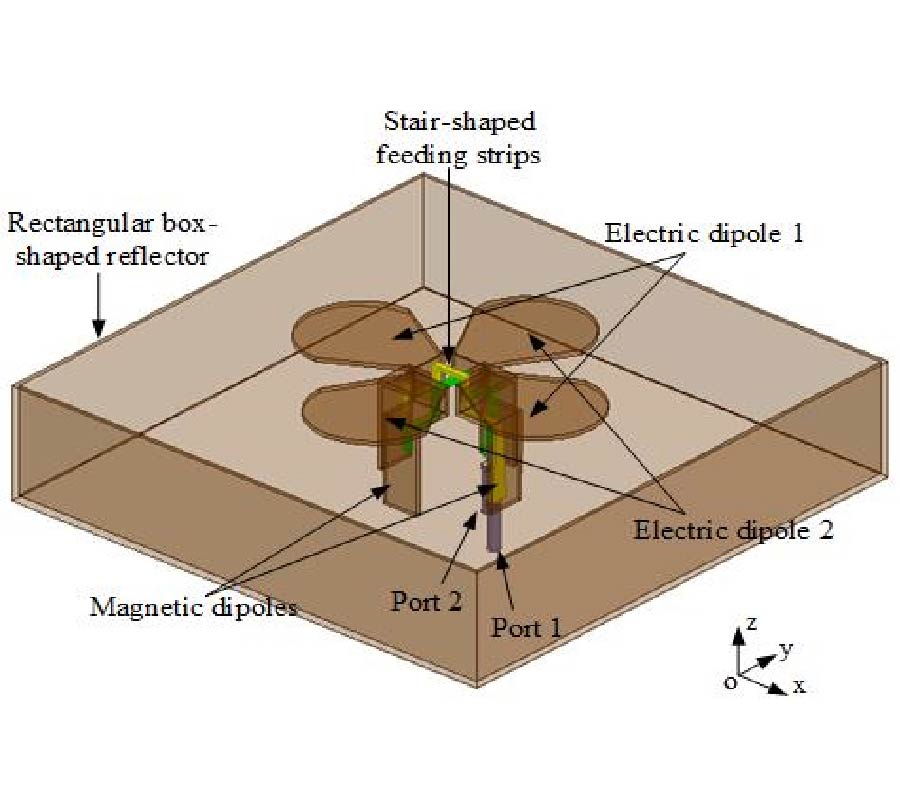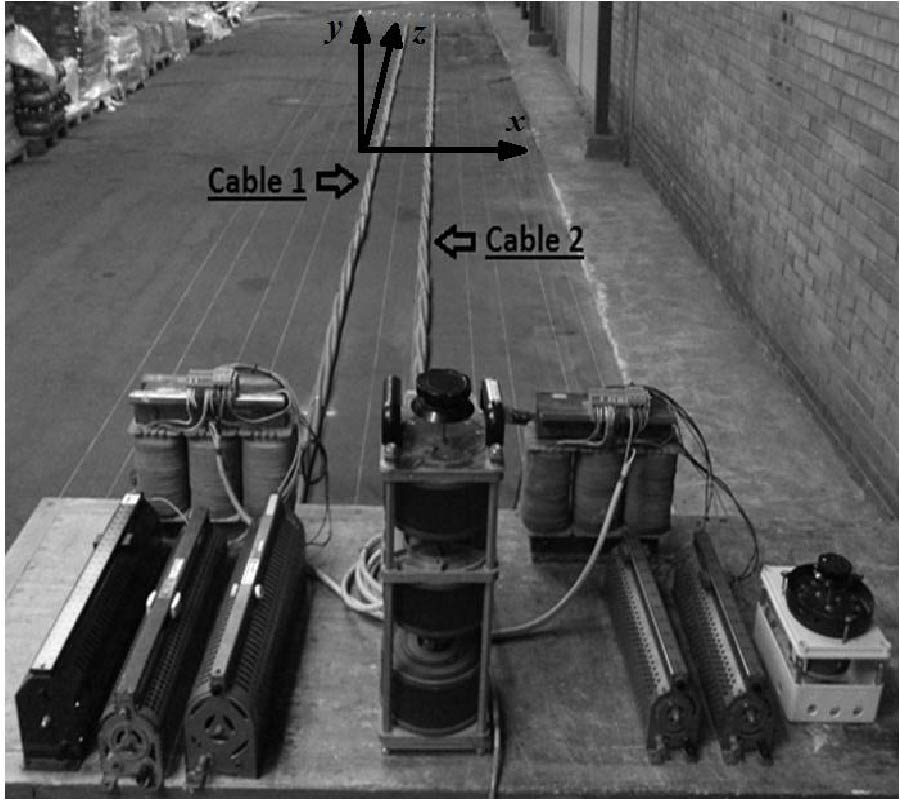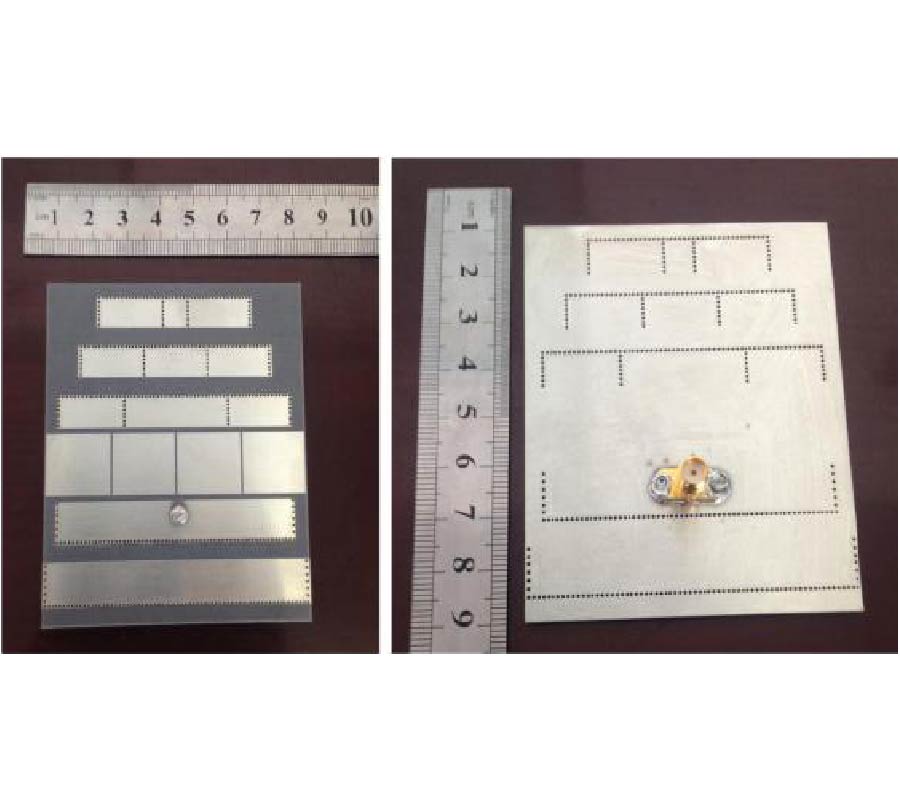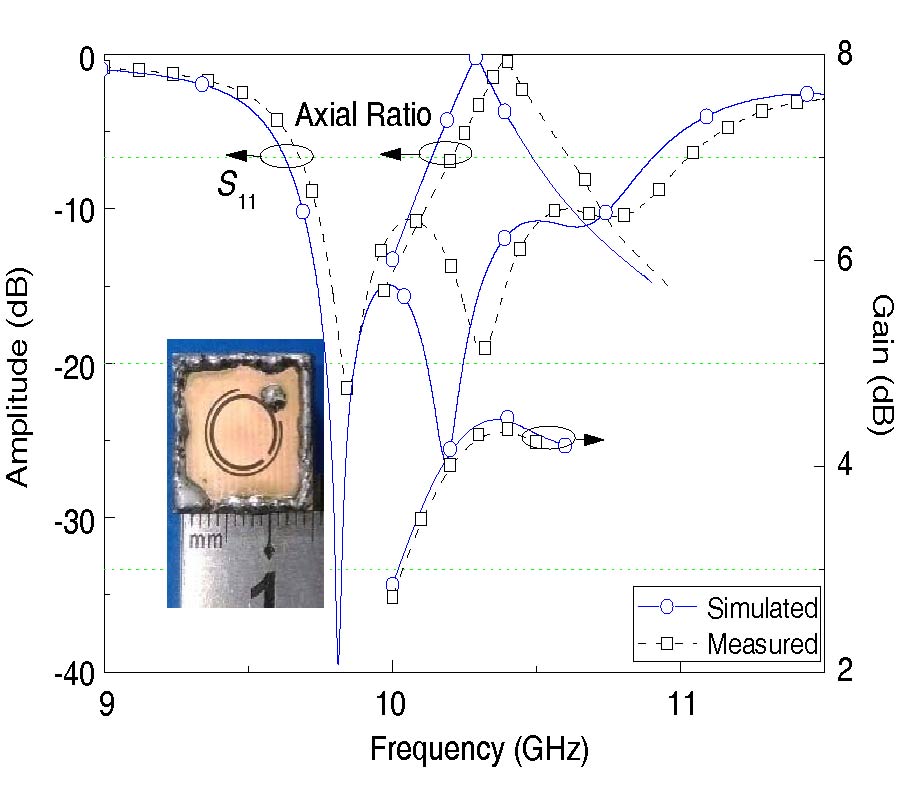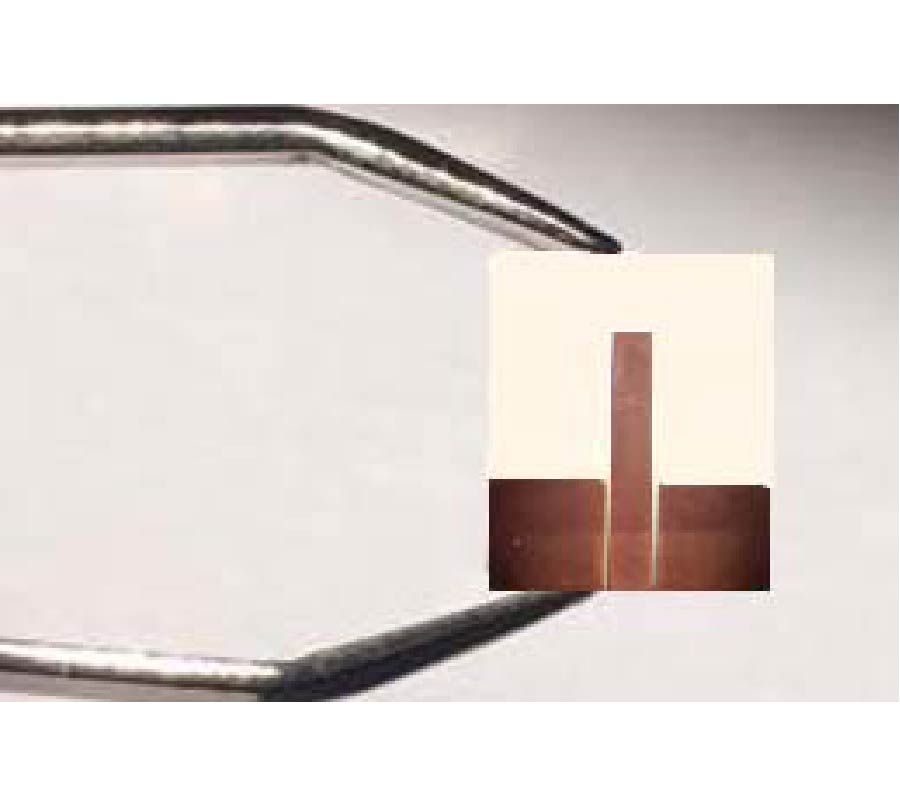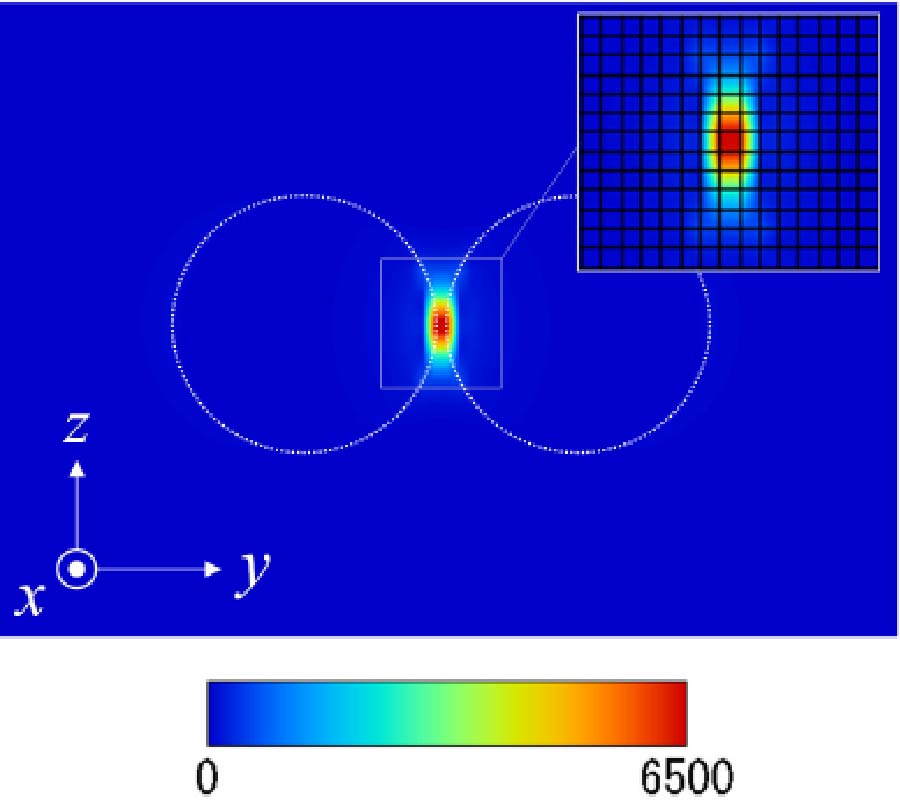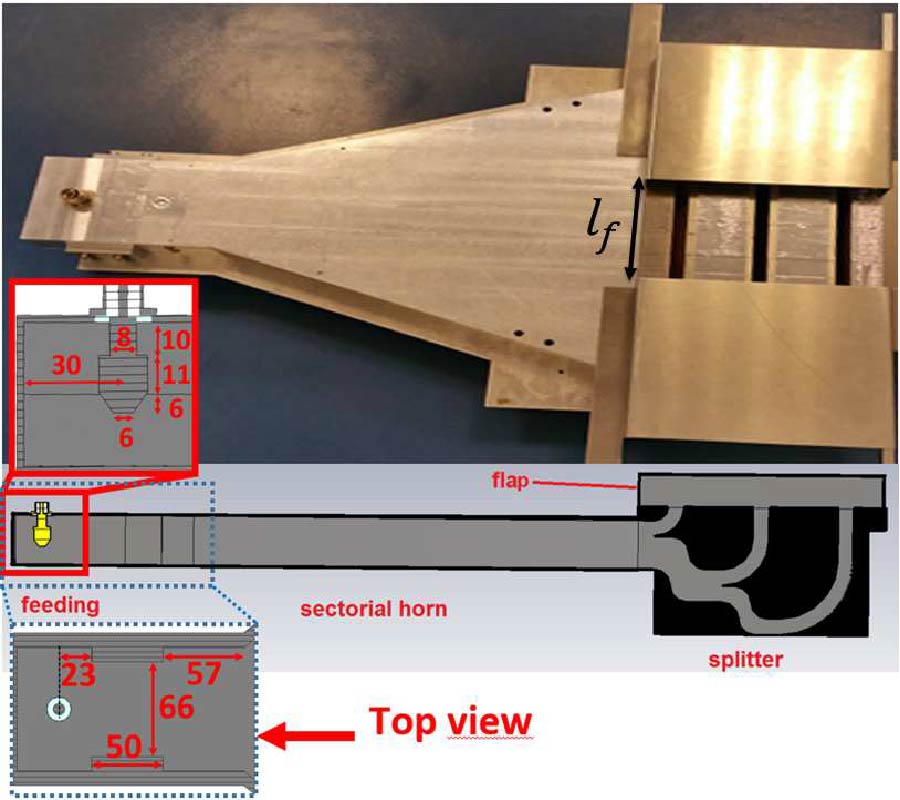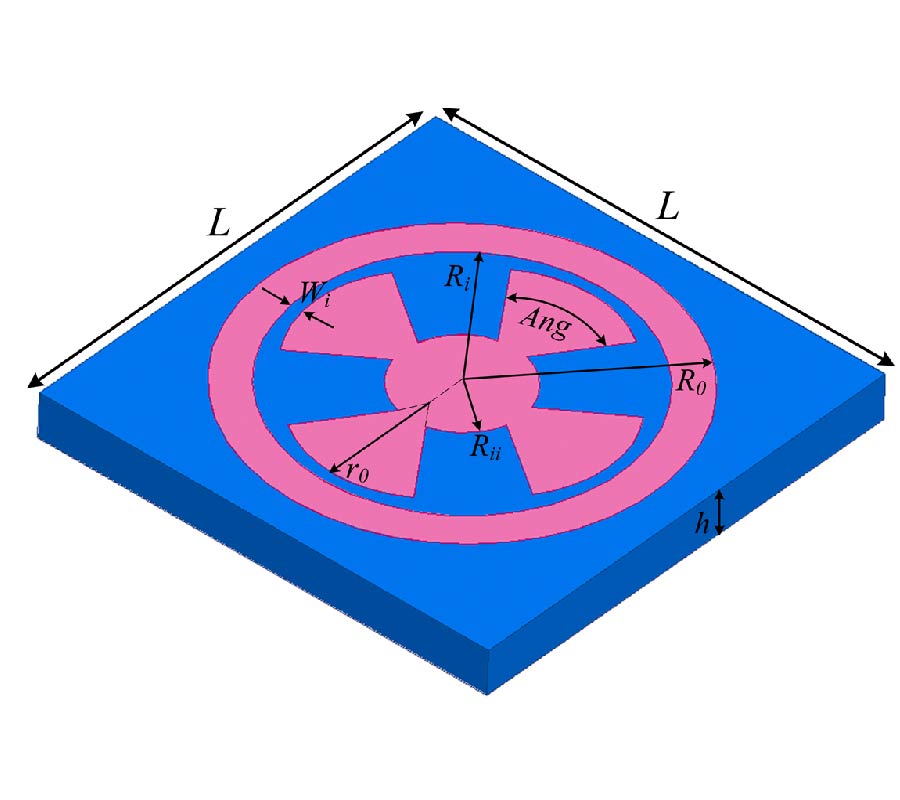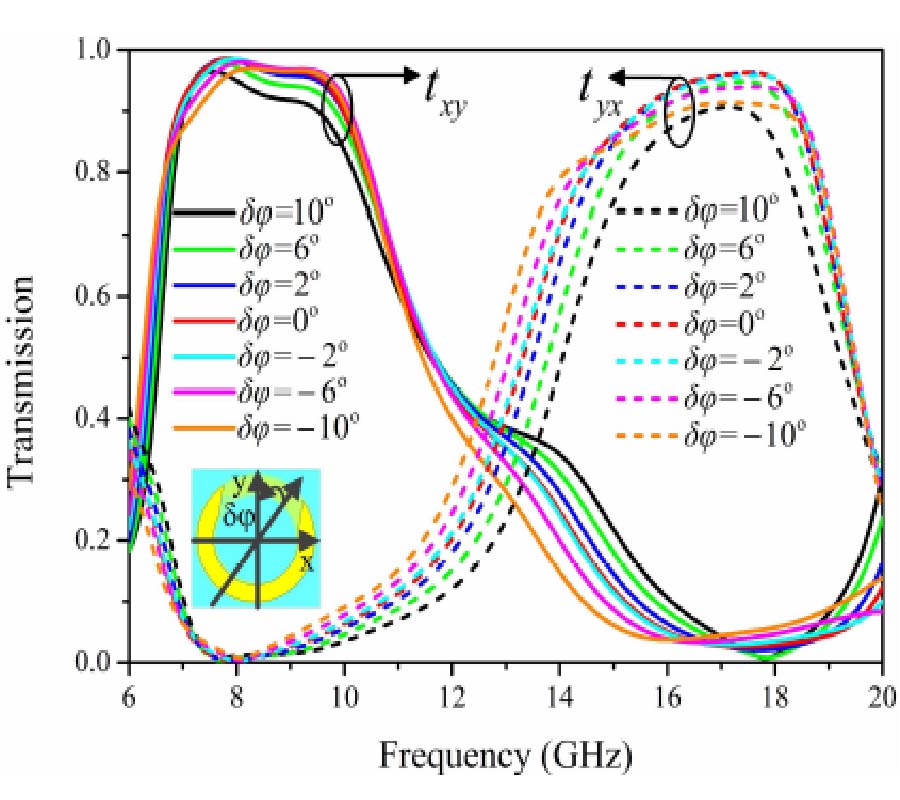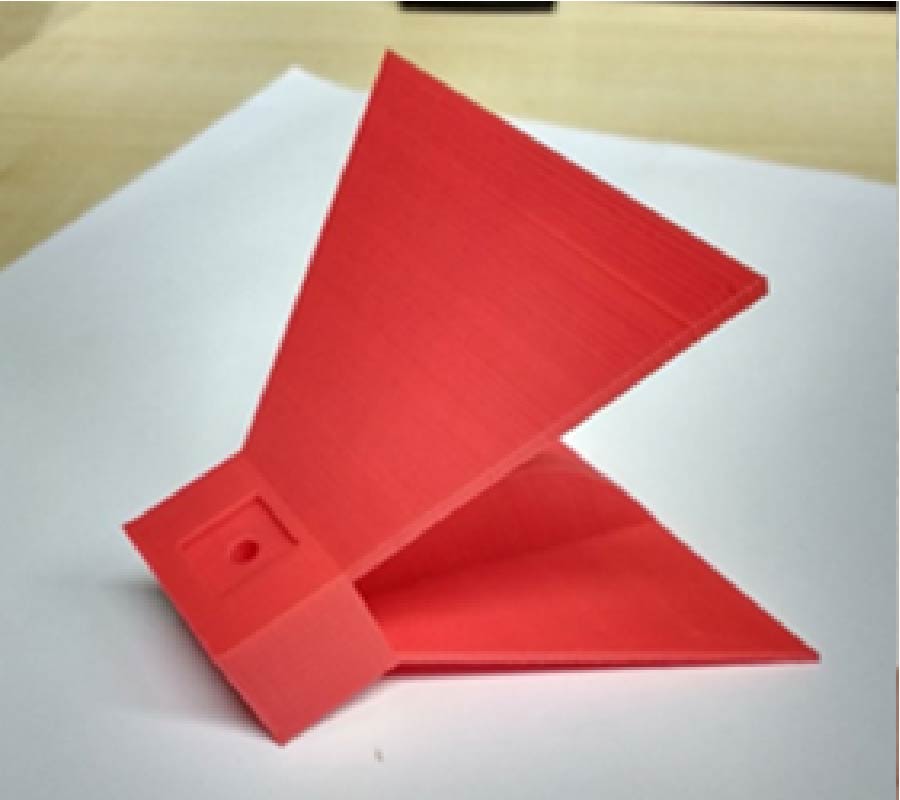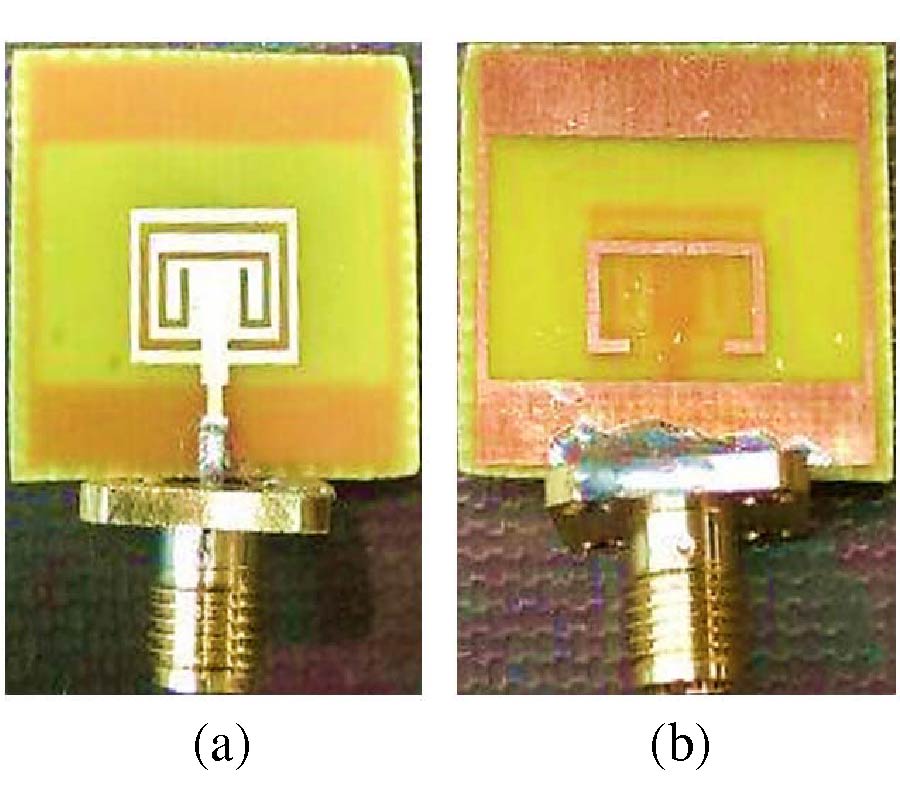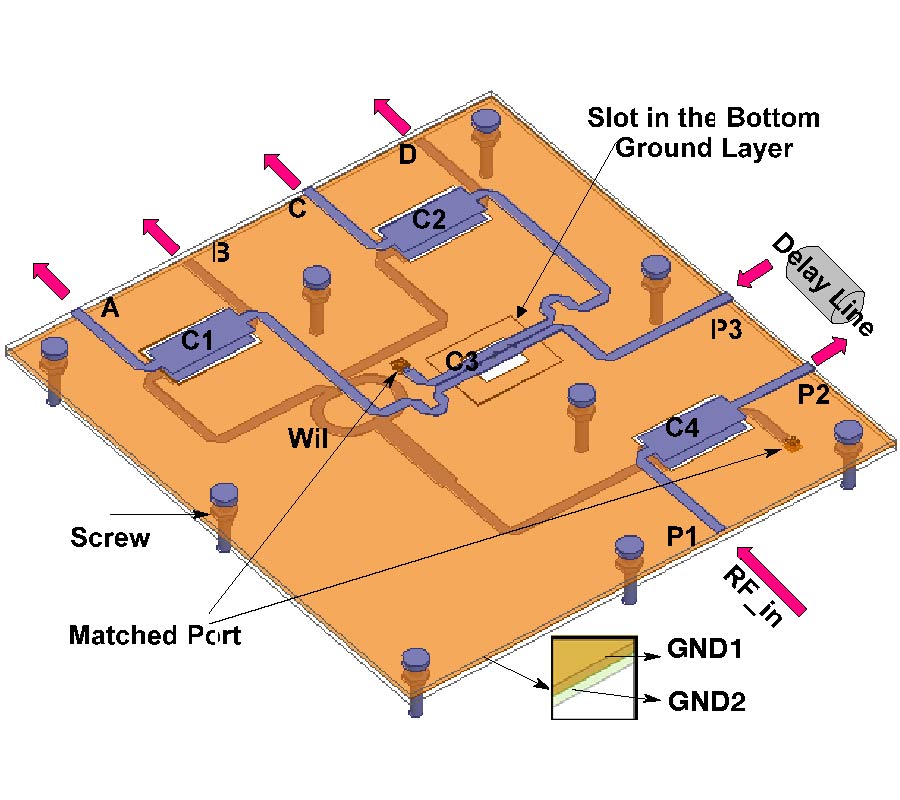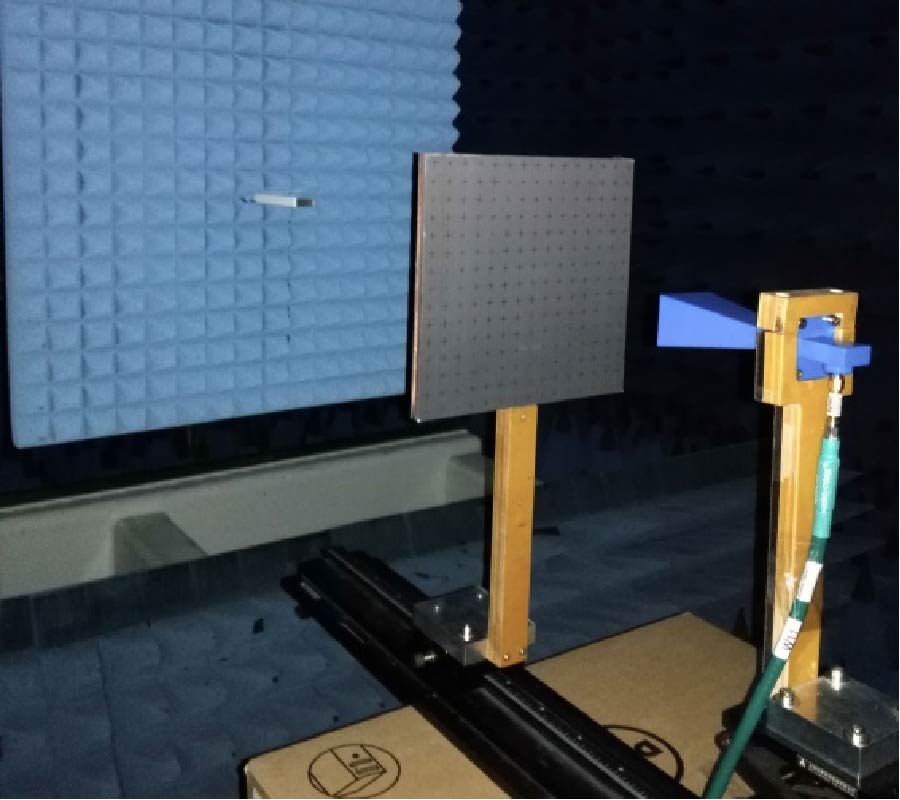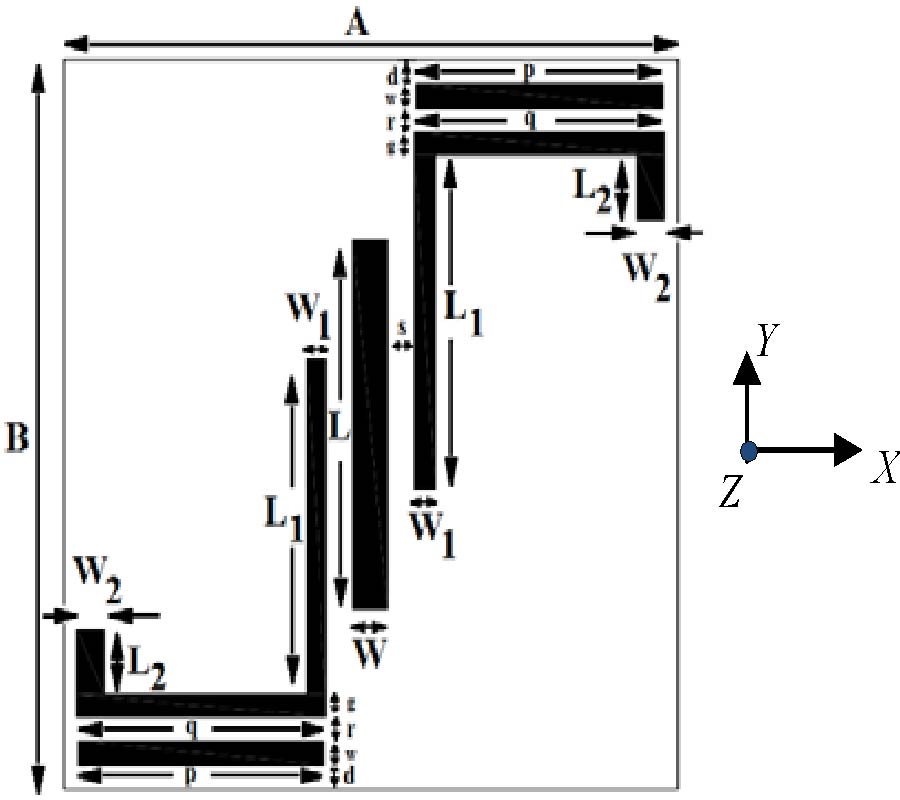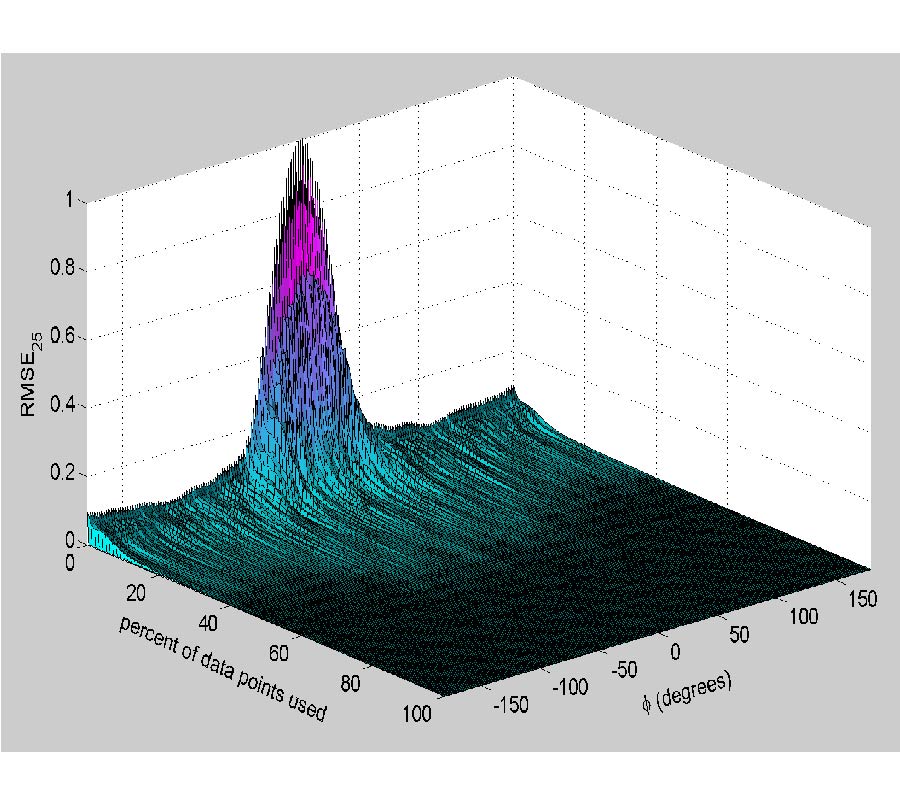Microstrip Magnetic Dipole Yagi Antenna with Enhanced Impedance Bandwidth and Reduced Size for Wideband Wireless Applications
Tian Li,
Fu-Shun Zhang,
Fei Gao,
Qi Zhang and
Yan-Li Guo
A microstrip magnetic dipole Yagi antenna with the feasibility of obtaining a wider bandwidth and relatively smaller size is proposed and demonstrated. The proposed antenna, consisting of a reflector, a driver with backed soldered SMA connector, a coupling microstrip line with three rectangular slots and three modified directors, is designed and fabricated. Good agreement between simulated and measured results is observed. Simulated and measured results reveal that the proposed antenna can provide an impedance bandwidth of 19.2% (4.95-6 GHz). Meanwhile, within the impedance bandwidth, the radiation pattern of the proposed antenna has front-to-back (F/B) ratios ranging from 10.1 dB to 26.1 dB, cross-polarization levels in the endfire direction from 47.1 dB to 73.0 dB, peak gains from 6.4 dBi to 10.4 dBi with an average peak gain of 9.6 dBi and endfire gains from 2.2 dBi to 4.3 dBi with an average endfire gain of 3.1 dBi. Additionally, the measured bandwidth of 19.2% (4.95-6 GHz) not only meets the need for certain Wi-Fi (5.2/5.8 GHz) or WiMAX (5.5 GHz) band communication application, but also provides the potential to implement multiservice transmission.
